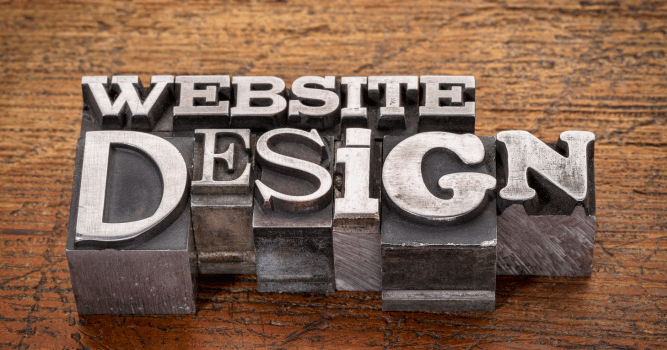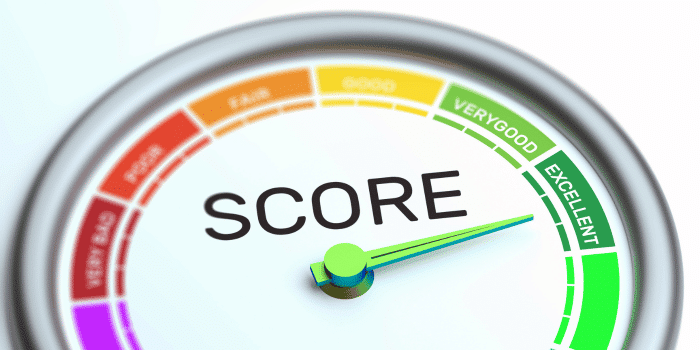Welcome to the world of SEO advertising! In today’s digital landscape, businesses are constantly looking for effective ways to boost their online presence and attract more customers. This is where search engine optimization advertising comes into play. By optimizing websites and utilizing various techniques, SEO advertising aims to improve website rankings in search engine results and drive organic traffic.
With SEO advertising, brands can reach their target audience and generate more qualified leads. It’s a powerful strategy that combines the art of advertising with the science of search engine optimization. By leveraging AI-powered tools and staying up-to-date with the latest trends, businesses can maximize their visibility, increase brand awareness, and ultimately achieve better conversion rates.
So, if you’re ready to take your online marketing efforts to the next level, dive into this introductory kit on SEO advertising. Get ready to unlock the potential of your brand in the digital realm!
Understanding the Importance of SEO in Advertising
SEO, or search engine optimization, is a critical component of advertising strategies in today’s digital landscape. It plays a vital role in increasing brand visibility and driving targeted traffic to websites. Let’s delve into why SEO is so important for businesses and how it can impact their advertising efforts.
Increased Brand Visibility and Targeted Traffic
One of the primary benefits of incorporating SEO into advertising campaigns is the ability to enhance brand visibility. By optimizing website content with relevant keywords and phrases, businesses can improve their search engine rankings. This means that when potential customers search for products or services related to their industry, they are more likely to come across their website.
Higher visibility not only increases the chances of attracting organic traffic but also ensures that the right audience finds their business. With effective keyword targeting, businesses can drive targeted traffic to their site, increasing the likelihood of conversions and sales.
Establishing Credibility and Trust
In today’s competitive market, establishing credibility and trust with potential customers is crucial for any business. When a website appears on the first page of search engine results, it automatically gains credibility in the eyes of users. Users often perceive top-ranking websites as more reliable and trustworthy compared to those that appear further down in the search results.
By implementing effective SEO strategies, businesses can boost their online reputation and build trust with potential customers. This can be achieved through various techniques such as creating high-quality content, optimizing website performance, and ensuring a positive user experience.
Higher Conversion Rates and Improved User Experience
SEO goes beyond just driving traffic to a website; it also focuses on improving user experience (UX). Websites that are optimized for both search engines and users tend to have higher conversion rates. When users have a seamless browsing experience on a well-structured site with fast loading times, they are more likely to engage with its content, make purchases, or take desired actions.
Effective SEO practices involve optimizing website design, improving site speed, ensuring mobile-friendliness, and providing relevant and valuable content. All these factors contribute to an enhanced user experience that can significantly impact conversion rates.
Long-Term Business Growth
Investing in SEO is not just a short-term solution; it can lead to long-term business growth. Unlike paid advertising methods that stop generating results once the budget runs out, the benefits of SEO can be sustained over time. By consistently implementing effective SEO strategies and adapting to changes in search engine algorithms, businesses can continue to attract organic traffic and maintain their online presence.
Long-term business growth through SEO involves continuously monitoring performance metrics, analyzing data, and making necessary adjustments to stay ahead of the competition. This ongoing effort ensures that businesses remain visible in search engine results and continue to reach their target audience effectively.
Exploring Different Types of SEO Marketing
On-Page Optimization: Boosting Your Web Pages
On-page optimization is a crucial aspect of SEO advertising. It involves optimizing individual web pages to improve their visibility in search engine rankings. This is done by incorporating relevant keywords, crafting compelling meta tags, and creating high-quality content that engages potential customers.
The key here is to ensure that your web pages are optimized with the right keywords. By conducting thorough keyword research, you can identify the phrases and terms that your target audience is using when searching for products or services similar to yours. Incorporating these keywords strategically throughout your content can help search engines understand the relevance of your web page.
Meta tags also play a significant role in on-page optimization. These snippets of information provide a brief summary of what your web page is about and appear in search engine results. Crafting compelling meta tags that accurately describe your content can entice users to click on your website, increasing organic traffic.
Quality content is another essential element of on-page optimization. Creating valuable and engaging content not only attracts potential customers but also helps establish credibility and authority within your industry. By offering informative blog posts, articles, or guides related to your business niche, you can position yourself as an expert and build trust with your audience.
Off-Page Optimization: Building Backlinks for Better Rankings
While on-page optimization focuses on optimizing individual web pages, off-page optimization revolves around building high-quality backlinks from reputable websites. These backlinks act as “votes” from other sites vouching for the quality and relevance of your content.
Backlinks are like recommendations from one website to another. When reputable websites link back to yours, search engines perceive it as a signal that your site provides valuable information worth sharing. As a result, search engines may reward you with higher rankings in search results.
Building backlinks requires outreach efforts such as guest posting on authoritative blogs or websites within your industry. It’s important to ensure that the websites you approach have a good reputation and are relevant to your business. The more high-quality backlinks you acquire, the stronger your website’s authority becomes in the eyes of search engines.
Local SEO: Targeting Your Local Audience
For businesses targeting a specific geographical area, local SEO is an effective strategy to attract potential customers searching for products or services in their vicinity. This type of SEO marketing helps businesses appear in local search results when users search for keywords related to their location.
Local SEO involves optimizing your website with location-specific keywords, creating and optimizing Google My Business listings, and obtaining positive reviews from satisfied customers. By implementing these strategies, you can improve your visibility among local searchers who are more likely to convert into paying customers.
To maximize the effectiveness of local SEO, it’s crucial to provide accurate and up-to-date information about your business. This includes details such as your address, phone number, operating hours, and any other relevant information that potential customers may need. Consistency across various online directories and platforms also plays a significant role in boosting your local SEO efforts.
Comparing PPC Advertising with Search Engine Optimization
PPC (Pay-per-click) advertising and search engine optimization (SEO) are two popular strategies used in digital marketing to increase website visibility and drive traffic. While they serve similar purposes, there are distinct differences between the two approaches.
PPC Ads: Pay for Immediate Results
PPC advertising involves paying for each click on an ad displayed on search engine result pages. It allows businesses to bid for ad placement in sponsored sections of search engines like Google or Bing. With PPC ads, you can quickly reach your target audience and generate immediate results. Here are some key points about PPC advertising:
Pros:
- Instant visibility: Your ads appear at the top of search results, increasing your chances of attracting clicks.
- Targeted approach: You can specify demographics, locations, and keywords to ensure your ads reach the right audience.
- Measurable results: Detailed analytics provide insights into ad performance, allowing you to optimize campaigns.
Cons:
- Costly investment: Paying for every click can become expensive, especially if you have high competition.
- Limited long-term impact: Once you stop investing in PPC ads, your visibility decreases immediately.
- Competition-driven bidding: Popular keywords often have high bids, making it challenging to compete with larger competitors.
SEO: Long-Term Benefits and Better ROI
On the other hand, SEO aims at improving organic rankings without direct payment for clicks. It focuses on optimizing website content, structure, and technical aspects to enhance its visibility in search engine results. While SEO may take time to show significant results compared to PPC advertising, it offers several long-term benefits:
Pros:
- Cost-effective strategy: Unlike PPC ads that require continuous investment, SEO provides ongoing value without direct costs per click.
- Sustainable visibility: By optimizing your website for relevant keywords, you can achieve higher organic rankings and maintain visibility even after reducing efforts.
- Trust and credibility: Ranking organically in search results builds trust among users, as they perceive top-ranked websites as more reputable.
Cons:
- Time-consuming process: SEO is a long-term strategy that requires consistent effort to optimize content, build backlinks, and improve website performance.
- Uncertain ranking fluctuations: Search engine algorithms frequently update, leading to fluctuations in rankings. It may take time to recover from any negative impact on your website’s visibility.
- Competitive landscape: Achieving top rankings can be challenging if you have strong competitors with established online presence.
Strategies for Effective SEO Marketing
To maximize the impact of your SEO advertising, it’s crucial to employ effective strategies that will help your website rank higher in search engine results. Here are some key tactics to consider:
Conduct Thorough Keyword Research
Keyword research is the foundation of any successful SEO strategy. By identifying relevant terms that users are searching for, you can optimize your website content to align with their needs. Use keyword research tools to discover popular and highly searched terms related to your industry or niche. This will enable you to create targeted content that resonates with your audience.
Create High-Quality Content
Creating high-quality content is a vital aspect of successful SEO marketing. Focus on producing valuable and informative content that meets user intent. Your content should provide solutions, answer questions, or offer insights that users are seeking. Engaging and well-written articles, blog posts, and guides not only attract visitors but also encourage them to stay on your site longer.
Build Strong Backlinks
Backlinks play a significant role in improving search rankings and boosting website authority. Seek opportunities to build high-quality backlinks from authoritative websites within your industry or niche. These backlinks act as “votes” of confidence for search engines, indicating that other reputable sites find value in your content. Guest posting, influencer collaborations, and creating shareable assets can help you acquire quality backlinks.
Optimize Technical SEO Aspects
Technical SEO involves optimizing the technical aspects of your website to improve its visibility in search results. Ensure that your site is mobile-friendly, has fast loading times, and features clean code structure. Implementing proper meta tags, header tags (H1s), alt tags for images, and XML sitemaps can enhance search engine crawlers’ understanding of your website’s structure.
Stay Updated with Algorithm Changes
Search engine algorithms are constantly evolving, which means staying updated is essential for maintaining strong SEO efforts. Follow industry blogs, attend webinars, and participate in forums to stay informed about the latest SEO trends and algorithm updates. Adapting your strategy to align with these changes will ensure that your website remains optimized for search engines.
Monitor and Analyze Performance
Regularly monitor and analyze the performance of your SEO efforts using tools like Google Analytics. Track metrics such as organic traffic, bounce rates, keyword rankings, and conversion rates to gauge the effectiveness of your strategies. Use this data to identify areas for improvement and make data-driven decisions to optimize your SEO marketing further.
By implementing these strategies, you can enhance your SEO marketing efforts and improve your website’s visibility in search engine results. Remember that SEO is an ongoing process that requires continuous monitoring, analysis, and adaptation. Stay committed to refining your strategies based on user behavior and search engine updates for long-term success.
Optimizing Your Website for Search Engines
To ensure your website gets the visibility it deserves, it’s crucial to optimize it for search engines. This involves various strategies and techniques that can help improve your search engine rankings and drive organic traffic to your site.
Clear Site Structure and Easy Navigation
One important factor in optimizing your website is having a clear site structure with easy navigation. When search engines crawl your site, they rely on its structure to understand the content better. By organizing your web pages into logical categories and creating a hierarchical structure, you make it easier for search engines to index and rank your content.
Page Load Speed Optimization
Page load speed plays a significant role in both user experience and search engine rankings. Slow-loading websites can frustrate users, leading them to leave before fully experiencing what you have to offer. Search engines prioritize fast-loading sites because they provide a better user experience.
To optimize page load speed:
- Compress images: Large image files can significantly slow down your website. Use tools or plugins that compress images without compromising quality.
- Minimize HTTP requests: Reduce the number of elements on each page that require separate HTTP requests (e.g., scripts, stylesheets). Combine them when possible.
- Enable browser caching: Utilize browser caching to store static resources locally on users’ devices, reducing load times for returning visitors.
- Use a content delivery network (CDN): A CDN distributes copies of your website’s files across multiple servers worldwide, ensuring faster delivery to users from different locations.
Mobile Optimization
With the majority of internet users accessing websites through mobile devices, mobile optimization has become vital for SEO success. Google prioritizes mobile-friendly websites in its mobile search results, providing a better user experience for mobile users.
To optimize your site for mobile:
- Use responsive design: Ensure that your website adapts to different screen sizes and resolutions, providing a seamless experience across devices.
- Optimize images for mobile: Compress images and use the correct dimensions to minimize load times on mobile devices.
- Implement AMP (Accelerated Mobile Pages): AMP is a framework that helps create fast-loading mobile web pages. Implementing AMP can improve your site’s performance on mobile.
By optimizing your website for search engines, you increase the chances of ranking higher in organic search results, driving more targeted traffic to your site. Remember that SEO is an ongoing process, and it’s essential to stay updated with the latest trends and best practices.
Keyword Research and Optimization Techniques
In order to achieve success with SEO advertising, it is crucial to focus on keyword research and optimization techniques. By utilizing the right tools, you can identify high-volume, low-competition keywords that will help boost your organic search rankings. Let’s explore some effective strategies for keyword research and optimization.
Utilize Keyword Research Tools
Keyword research tools are invaluable. These tools provide insights into search volumes, competition levels, and related keywords that can help you refine your targeting strategy. By using these tools effectively, you can uncover hidden opportunities and gain a competitive edge in the online landscape.
Optimize Meta Tags, Headings, and URLs
Optimizing meta tags, headings, and URLs with relevant keywords is an essential aspect of SEO advertising. Meta tags provide search engines with information about your web pages’ content. By including targeted keywords in meta titles and descriptions, you increase the chances of attracting clicks from searchers who find your website in the search results.
Similarly, incorporating relevant keywords into headings (H1-H6) helps search engines understand the main topics covered on each page. This improves the overall search experience for users by providing them with clear and concise information that matches their search query.
Furthermore, optimizing URLs by including descriptive keywords not only enhances the visibility of your web pages but also improves their click-through rates (CTR). When users see a URL that contains their search query or closely related terms, they are more likely to click on it as it appears more relevant to their needs.
Harness the Power of Long-Tail Keywords
While targeting broad keywords is important for SEO advertising, incorporating long-tail keywords into your content strategy can yield significant benefits. Long-tail keywords are longer phrases that are more specific and have lower competition compared to broader terms.
By integrating long-tail keywords naturally into your website’s content, you can attract more targeted traffic. This means that the users who find your website through long-tail keyword searches are more likely to be interested in what you have to offer, increasing the chances of conversions and sales.
Moreover, long-tail keywords also contribute to higher rankings in search results. Due to their specificity, they often face less competition from other websites. As a result, by targeting these niche keywords, you can improve your chances of ranking higher and gaining greater visibility in organic search.
Conclusion: The Impact of SEO Advertising
Congratulations! You’ve now gained a comprehensive understanding of the impact of SEO advertising. By incorporating effective search engine optimization techniques into your marketing strategy, you can significantly enhance your online visibility and attract more organic traffic to your website. Just imagine the potential growth and success that await you!
To maximize the benefits of SEO advertising, it’s crucial to stay up-to-date with the latest trends and continuously refine your strategies. Remember, Rome wasn’t built in a day, and neither is a successful online presence. It takes time, effort, and dedication to optimize your website for search engines and climb those rankings.
So, what are you waiting for? Start implementing the insights you’ve gained from this blog post into your marketing efforts today. Take advantage of keyword research techniques, optimize your website’s content, and explore different types of SEO marketing to gain a competitive edge in the digital landscape.







